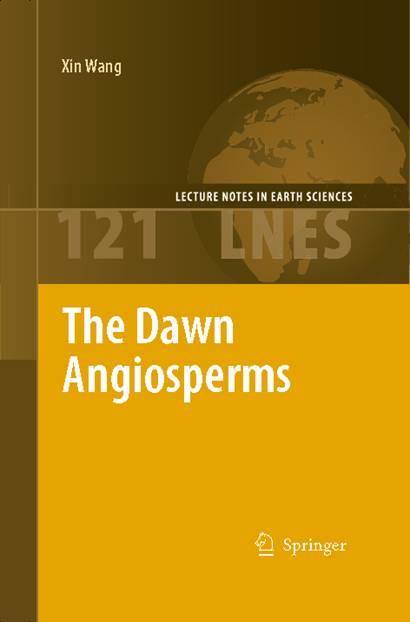
The origin of angiosperms is an abominable mystery in evolutionary biology that has puzzled botanist for long. However, the The Dawn Angiosperms written by Dr Wang Xin from Nanjing Institute of Geology and Palaeontology Chinese Academy of Sciences and published by Springer gives new interpretation to sheds light on this historical mystery.
This book is about fossil plants of so-called "pre-historic" angiosperms. It reflects the newest progress in research on the origin of angiosperms, and will definitely trigger many new ideas in research. It emphasizes the early Cretaceous and Jurassic materials, rather than later ones, as they are the key periods for the origin of angiosperms. Dr Wang integrates multiple techniques, including SEM, TEM, light microscopy, peeling and cladistics, to study the morphology, anatomy and phylogeny of the fossils. Several Jurassic materials of angiosperms that have never been reported before are included, these used to be thought as pre-historic for flowering plants. Two more fossils angiosperms from the Yixian Formation, where Archaefructus was excavated, are reported. Newer and stricter criterion for identifying fossil angiosperms is proposed.
This book, besides providing necessary background information and discussions, focuses on the earliest angiosperms: namely those more than 125 million years old. Currently 125 million year old angiosperms, are the oldest to be found - especially in the eyes of European scholars. It proceeds by introducing several interesting angiosperms from the Jurassic and early Cretaceous, including Schmeissneria (early-middle Jurassic, 160-199 million years old (Ma)), Xingxueanthus (middle Jurassic, 160 Ma), Solaranthus (middle Jurassic, 164 Ma), Callianthus (early Cretaceous, 125 Ma), Chaoyangia (early Cretaceous, 125 Ma), Archaefructus (early Cretaceous, 125 Ma), Sinocarpus (early Cretaceous, 125 Ma). Others are currently being processed. These fossils, most of which have hitherto not been published,will uncover many unknown aspects of early angiosperms, and help to solve the mystery surrounding their origin.
